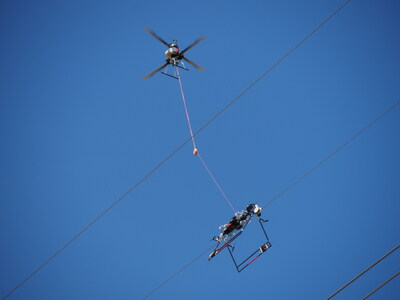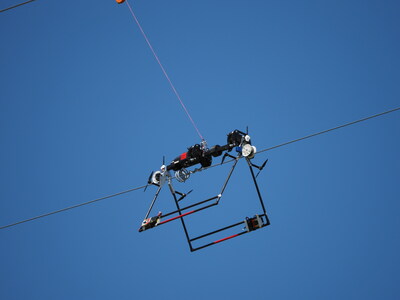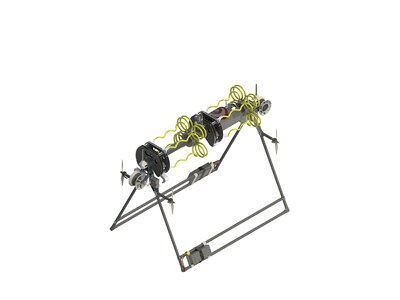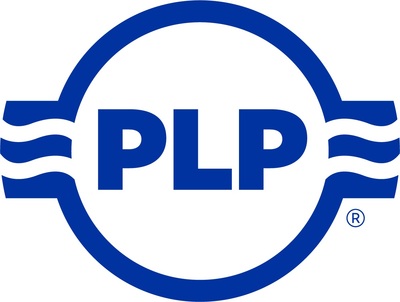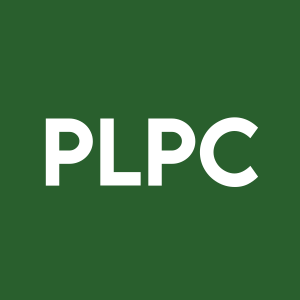PLP AND FULCRUMAIR UNVEIL GROUNDBREAKING ROBOTIC SOLUTION FOR INSTALLING BIRD DIVERTERS ON OVERHEAD POWER LINES
- None.
- None.
Insights
The partnership between PLP and FulcrumAir to launch the Mini LineFly represents a significant advancement in the energy sector's operational efficiency and worker safety. The automation of installing bird diverters can lead to a reduction in manual labor costs and potential human error, which is particularly pertinent given the industry's current labor shortages. Furthermore, the enhancement of safety measures aligns with the sector's increasing focus on workplace safety and may result in lower insurance and liability costs for utility companies.
From an operational standpoint, the Mini LineFly's ability to accurately place bird diverters at predetermined intervals can improve the reliability of power transmission. By reducing bird-related power outages, utility companies can expect to see a decrease in service disruption and maintenance costs. This reliability is crucial for energy providers, especially those involved in renewable energy projects like the High Banks Wind Project, where consistent performance is necessary to meet energy production targets.
The integration of the Mini LineFly system into power line maintenance has implications beyond operational efficiency; it also represents a proactive approach to wildlife conservation. Bird diverters are essential tools in mitigating avian mortality rates associated with power lines. The precise installation of PLP's BIRD-FLIGHT Diverters can significantly reduce the risk of bird collisions, which is a critical concern for conservationists and regulatory bodies alike.
By potentially lowering the incidence of bird deaths, utility companies may also see an improvement in their environmental and social governance (ESG) metrics. This improvement can enhance a company's reputation and appeal to socially responsible investors, who are increasingly considering ESG factors in their investment decisions. Moreover, by addressing a common environmental issue, utility companies could avoid regulatory fines and benefit from potential government incentives aimed at wildlife protection.
The deployment of the Mini LineFly and CSR-18 Robot by PLP and FulcrumAir could have a tangible impact on the financial performance of the companies involved. The adoption of such technologies is likely to be viewed positively by investors, as it indicates a forward-thinking approach and the potential for cost savings. The initial success of the technology during the High Banks Wind Project in Kansas serves as a proof of concept, which could lead to increased demand for these robotic systems.
In the short term, the capital expenditure for these robotic systems may affect the financial statements of PLP and FulcrumAir. However, the long-term benefits, such as improved efficiency and reduced operational costs, could lead to increased profitability. Additionally, as utility companies globally face similar challenges, the international operational capability of these robotic solutions suggests a significant market opportunity, possibly contributing to revenue growth and stock performance for both PLP and FulcrumAir.
"We are excited to collaborate with FulcrumAir to launch this newest addition to our expanding lineup of robotic installation solutions," said Ryan Ruhlman, President of PLP. "The Mini LineFly not only offers the most efficient method for installing bird diverters but, more significantly, contributes to enhancing the safety environment for utility workers around the world."
The Mini LineFly accurately places PLP BIRD-FLIGHT Diverters at predetermined intervals, maximizing the performance to help safeguard wildlife from accidental contact with power lines. This critical wildlife protection device reduces the probability of unintended bird collisions by enhancing line visibility, helping to protect diverse avian species and mitigate potential costly and problematic power outages.
The first implementation of robotically installed PLP BIRD-FLIGHT Diverters took place during the recent High Banks Wind Project in
"We are extremely pleased with how the Mini LineFly performed during this demanding project," said Patrick Arnell, President & CEO of FulcrumAir. "Our mission is to develop and operate equipment that assists electric utilities with the industry's ongoing challenges, including staffing shortages, the increased need for safer work sites, and overall project efficiency requirements."
Alongside the Mini LineFly, PLP and FulcrumAir also recently introduced the CSR-18™ Robot, a state-of-the-art robotic installation system designed for PLP CUSHION-GRIP® Twin Spacers. Both cutting-edge robotic solutions are fully operational worldwide, with multiple projects initiated globally.
ABOUT PLP
PLP protects the world's most critical connections by creating stronger and more reliable networks. The company's precision-engineered solutions are trusted by energy and communications providers worldwide to perform better and last longer. With locations in over 20 countries, PLP works as a united global corporation, delivering high-quality products and unparalleled service to customers around the world.
ABOUT FULCRUMAIR
Founded in 2016 and having invested over 60,000 hours into design and engineering to date, FulcrumAir is a leader in developing robotic solutions for the powerline industry. FulcrumAir's portfolio of UAVs and aerial robotics are specifically designed to address critical challenges facing electric utilities by robotically performing line construction tasks such as installing line spacers and bird flight diverters. Additional robotic solutions are currently under development.
![]() View original content to download multimedia:https://www.prnewswire.com/news-releases/plp-and-fulcrumair-unveil-groundbreaking-robotic-solution-for-installing-bird-diverters-on-overhead-power-lines-302034143.html
View original content to download multimedia:https://www.prnewswire.com/news-releases/plp-and-fulcrumair-unveil-groundbreaking-robotic-solution-for-installing-bird-diverters-on-overhead-power-lines-302034143.html
SOURCE Preformed Line Products







